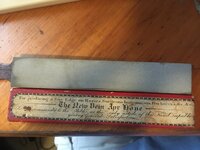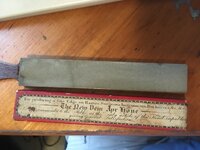- Thread starter
- #41
To what do we account for the variances / range of stones? Are the stones mined at the quarry / quarries diverse or is there some sort of misidentification going on historically?
Yes to both. Natural variation per mine. Multiple mining sites within the area with more variation. Multiple names for the same stones. Multiple stone types with the same name. All of the above seem to crop up over “history” of this/these stones. Certainly makes discussion on them a little complicated.


